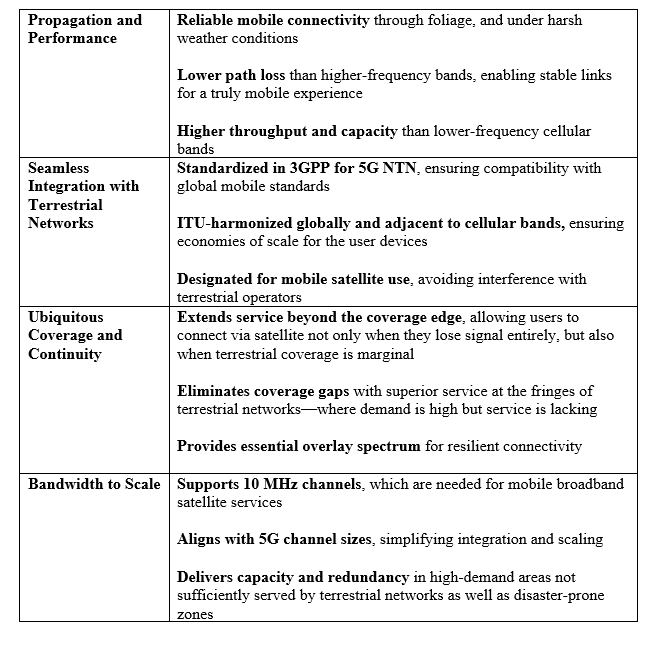Direct-to-Device (D2D) satellite connectivity is becoming a defining capability for the mobile industry, enabling coverage to reach places that terrestrial networks cannot, adding resilience, and improving the overall mobile user experience. At the center of this emerging capability is mobile satellite services (MSS) spectrum—including the L-band spectrum licensed to Ligado—which plays an outsized role in making D2D scalable, reliable, and ready for mass adoption.
Propagation and Performance
Reaching everyday smartphones—devices with small antennas and limited power—is the central challenge of D2D. L-band spectrum, originally designated for MSS connectivity precisely for its optimal propagation characteristics, addresses this with unmatched effectiveness, serving as the backbone of today’s early D2D services—and the launchpad for tomorrow’s broadband satellite experiences.
Seamless Integration with Terrestrial Networks
D2D’s promise lies in its ability to extend terrestrial 5G networks within the contours of the mobile ecosystem. Adjacent to cellular bands and ITU-harmonized globally, the L-band is 3GPP-standarized for non-terrestrial services and uniquely positioned to seamlessly integrate within mass-market devices, mobile operator service offers, and enhanced user service experiences.
Ubiquitous Coverage and Continuity
While many D2D operators aim to reuse terrestrial cellular spectrum in underutilized areas, this approach breaks down at the edges of terrestrial network coverage. In these potential dead zones—just outside of terrestrial coverage or where signal strength drops to one or two bars—reuse is impractical as it negatively impacts the terrestrial network coverage and capacity. Ligado’s MSS spectrum offers a clean, scalable overlay, making L-band not just a supplement—but a strategic necessity—for delivering D2D where it’s needed most.
Bandwidth to Scale
After years of spectrum planning and investment, Ligado has coordinated over 40 MHz of L-band spectrum for mobile satellite services in the U.S. and Canada—strategically organized into high-efficiency 10 MHz blocks. This scaled spectrum configuration aligns with 3GPP NTN standards for channelization, readily unlocking the performance needed for true mobile broadband satellite connectivity.
The Bottom Line

Direct-to-device satellite connectivity will redefine mobile service in the coming decade—but only if it is built on spectrum that can truly support user expectations. MSS L-Band spectrum is not just a technical enabler; it is the cornerstone of scalable, resilient, economically viable D2D connectivity.